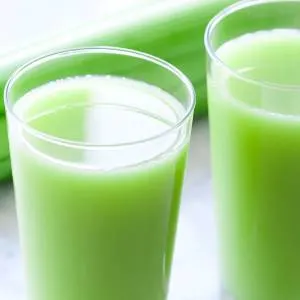 Lots of people consider juicing to be a health cheat code that’s convenient, easy, and beneficial. Juicing fruits and vegetables allows to you easily consume the many vitamins and minerals that your body needs to stay healthy and fight off disease.
Lots of people consider juicing to be a health cheat code that’s convenient, easy, and beneficial. Juicing fruits and vegetables allows to you easily consume the many vitamins and minerals that your body needs to stay healthy and fight off disease.
Today we are going to look at the best vegetables to juice so you can get the maximum benefit from them. These vegetables can be added to your favorite fruits to create a juice that is healthy and tastes delicious.
Before looking at the best vegetables to juice for health benefits and tasty beverages, here are some basics about the actual juicing process and why it has become such a favorable health trend these days.
Read More: 23 simple juice recipes
What is juicing?
Juicing is essentially the act of removing all liquid components from fruits and vegetables. What you’re left with is a nutrition-filled beverage that you can implement into your daily routine to get a better load of benefits fruits and vegetables have to offer.
What you’re doing when you juice your fruits and veggies is remove all of the solid components from the picture, making it easier to consume more at once. The liquid you’re left with is rich in vitamins, minerals, and several different kinds of antioxidants.
Benefits of juicing
The benefits of juicing veggies and fruits are basic enough to understand. Your body needs the required amount of nutrients every day to function properly and be at its healthiest, peak condition. Now, getting all those nutrients isn’t the easiest task, especially if you rely heavily on fruits and vegetables (say perhaps, in a vegan or vegetarian diet).
Sometimes you just can’t keep eating the same foods over and over again. This is where juicing comes in handy. Juicing allows you to have more at once, so you’re getting the right amount of nutrients quicker. To make your meals, beverages, and snacks more interesting, you can even use your homemade juices in different recipes and drinks to shake things up a little and add some flavor and taste to your healthy lifestyle.
Read More: Best Kale for Juicing: 5 Varieties & Kale Benefits
Disadvantages of juicing
 Of course, there are shortcomings in juicing your fruits and vegetables since you are taking away from their original shape and structure. You lose almost 90% of all the fibers found in fruits and vegetables, as well as certain antioxidants which are found inside of fibers.
Of course, there are shortcomings in juicing your fruits and vegetables since you are taking away from their original shape and structure. You lose almost 90% of all the fibers found in fruits and vegetables, as well as certain antioxidants which are found inside of fibers.
Many people have attempted the trend of juicing diets for weight loss, which actually aren’t as beneficial as you would believe. You can suffer from long-term metabolism issues as these diets promote calorie restriction. Juices from fruits and veggies also do not provide you with essential proteins and fats, and therefore are not a smart central unit for dieting. On the side, they can work wonders, but not when they are what you solely rely on.
There is also the issue of fruit-based juices having more sugar in them. The more you drink, the more sugar you consume, and while it’s not bad sugar, it’s never good to have anything in larger amounts. Vegetable juices have a much lower sugar level than fruit juices.
In the end, the best choice is balance. There are definite benefits to juiced fruits and vegetables, but there are also shortcomings that can be fixed simply by eating fruits and vegetables whole as well.
Balance your diet between juices and whole foods, and make sure you’re eating an even amount of both fruits and vegetables on a daily basis.
Juicing methods
There are two methods to juicing fruits and vegetables, depending on the machine you’re using. There is also the option of juicing fruits and veggies by hand, which is much more time-consuming and cannot be done with some types of foods.
- First, there is the centrifugal method. This method requires a blender. Essentially, you grind your fruits and vegetables to a pulp, and for further convenience, strain or filter any of the remaining solid pulp out before drinking. This method will separate the solids from the liquids.
- The second option is to cold press your fruits and vegetables. This means you crush them, squeezing out all the natural juices until you’re left with an empty shell of the fruit or vegetable.
Depending on the fruit and/or vegetable you’re juicing, either method can be more suitable. What’s important is that you get only liquids left inside of your drink for a refreshing and healthy beverage.
Read More: How to juice without a juicer
Best vegetables to juice
Surely when you think of juicing, fruits are the first thing to come to mind since fruit juices are enjoyed widely. They give you sweet, rich flavor and bright, appealing colors, and they’re made into commercial juices all the time.
But there are vegetables which you can juice as well, for healthy, nutritious, and delicious results. Here is a compilation of some of the best vegetables to consider juicing for healthy drinks and nutrition-filled juices.
Kale
Kale is a great option as it has a mild flavor and can be mixed with other fruits and vegetables. It contains vitamin A, C, and K, and is high in antioxidants.
Kale can be used to reduce the risk of heart disease as well, lowering levels of LDL cholesterol.
Read More: What is the best blender for kale smoothies?
Carrots
Carrots are well known for their benefits to the eyes, and the same can go for carrot juice. It lowers the risk of eye disease, heart disease, and even cancer.
Carrots contain vitamin A, biotin, potassium, and carotenoids as well. And did you know you can also juice the tops of carrots?
Read More: Carrot juice blender recipe
Beets
Beets are a great option to juice including their leafy green tops known as beet greens. This part of the beet is high in nutrients. The rest of the beet contains manganese, potassium, folate, and nitrates.
Beet juice has been proven to lower blood pressure, maximize your brain health, and improve athletic functioning when consumed regularly.
Read More: How to make beet juice in a Vitamix
Cabbage
Cabbage is a delightful cruciferous vegetable that helps conquer the big offenders of health. Cabbage juice reduces your chances of diabetes, heart disease, and fights inflammation.
Cabbage is full of vitamin K and vitamin C.
Read More: How to make cabbage juice without a juicer
Broccoli
Everyone knows the famous (or infamous) broccoli, being one of the first veggies introduced to children. This tree-imitator provides your body with vitamin A and C, along with a handful of antioxidants and nitrates.
It also reduces blood pressure levels and has strong antacid effects.
Read More: Broccoli smoothie recipe
Cucumber
Cucumber is one of the best vegetables for hydration, as its construction is mainly water. There is also the timeless benefit of reducing skin inflammation, which is why it’s popularly used in facial masks and applied over your face and eyes.
Cucumber has potassium, manganese, vitamin K and C to offer when consumed as a beverage.
Tomatoes
Finally, there is everyone’s familiar red friend, the tomato. Tomatoes are rich in vitamin C, and potassium, along with folate and lycopene. They have strong anti-inflammatory effects as well.
Read More: Homemade tomato juice recipe
Best vegetables to juice: final thoughts
A handful of these and others make for the best vegetables to juice. All are easily accessible and grocery staples in most kitchens. So, why not enjoy the wholesome goodness of these veggies in juice form.
